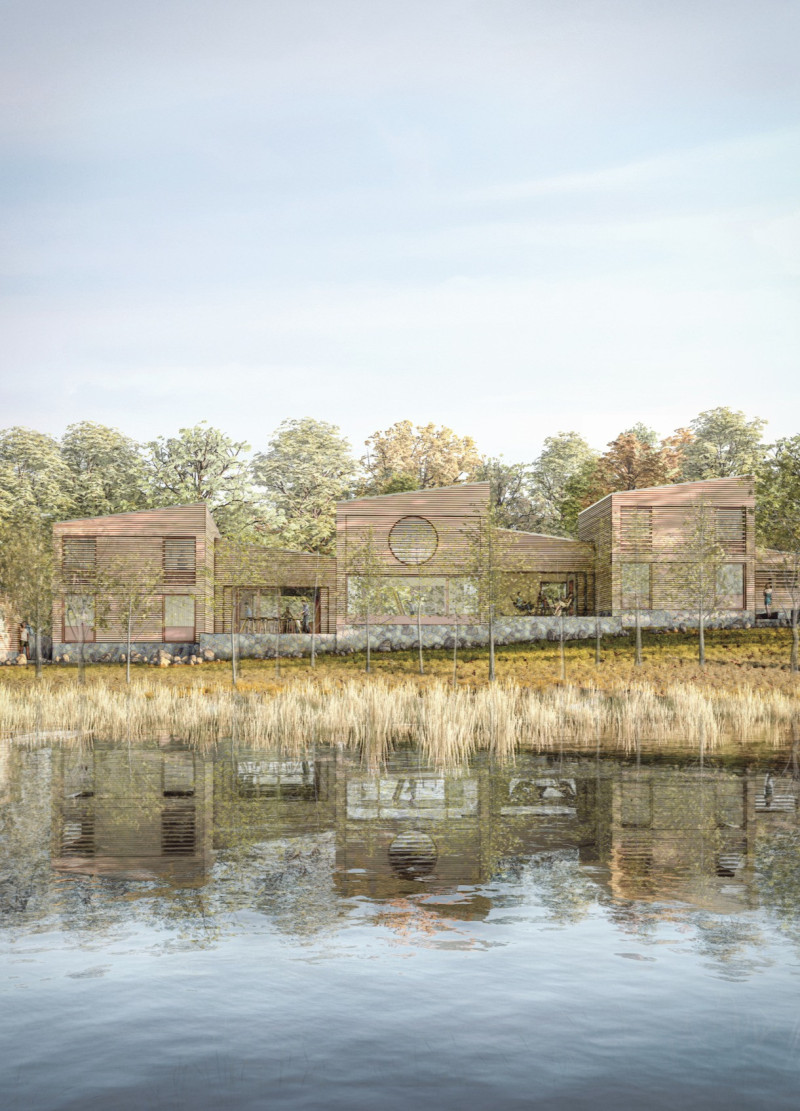5 key facts about this project
Sustainability is a core element of this architectural endeavor. The project emphasizes the use of local materials and integrates passive design strategies, allowing for an efficient response to the climate and landscape. The cabins are arranged to optimize views of the lake while ensuring privacy for occupants, thus enhancing their connection to the natural environment.
Unique Design Features
The architectural design diverges from typical lakefront developments through its thoughtful organization and community-oriented approach. Each cabin is modular, promoting a sense of community while allowing for individual privacy. The layout is informed by solar orientation principles, maximizing daylight intake while providing natural ventilation.
The incorporation of a central multi-purpose workshop space represents a significant aspect of the design. This area is designed to facilitate creative work and communal gatherings, directly linking the indoor environment with the surrounding gardens and lakefront. Innovative use of circular and angular window designs serves not only functional purposes, such as maximizing light and views, but also enhances the aesthetic quality of the interiors.
Sustainable Material Choices
The material palette selected for this project plays a vital role in its overall impact. Key materials include timber, sourced locally to reduce transportation emissions and provide a warm aesthetic. Stone is utilized for foundational structures, offering stability and a connection to the landscape. Large areas of glass create transparency, fostering a seamless indoor-outdoor experience while facilitating natural light.
Interior elements incorporate sustainable materials like cork and natural fibers, focusing on acoustic insulation and thermal performance. Terrazzo flooring in communal areas combines durability with visual appeal, reflecting the project's commitment to both function and aesthetic harmony.
For a comprehensive understanding of the project's architectural plans and innovative design details, the reader is encouraged to explore the presented elements further. Insights into architectural sections, designs, and ideas will provide a deeper appreciation of how "Sojourn to the Shore" successfully integrates architecture with nature, emphasizing functionality and sustainability.


























